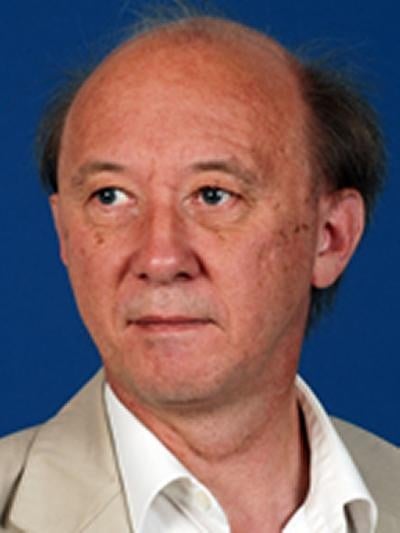
Ian Talbot, a friend, philosopher and guide

The other day I had an exchange of views on inspiration and motivation with my liberal arts students at the university. I was asked about my source of inspiration that led me on to become a historian. To their surprise, I took quite a while formulating a credible answer to that very simple question. Finally, taking a cue from Albert Einstein who once said that so many people had influenced him including family members, friends, colleagues and the society at large, which became a part of a famous book What I Believe, I regurgitated the great man’s viewpoint. But the students’ curiosity was far from satiated.
The historian that influenced me the most was exactly what few of them were trying to wangle out of me. Well, I have benefited from the works of many historians. Arnold Toynbee being one of the principal sources of inspiration when I was very young. Similarly, I learnt a great deal from the works of several Indian historians like Irfan Habib, Romila Thapar and Bipan Chandra, followed by historians from the Subaltern school. Christopher Bayly has been a big inspiration; working with him for four years at Cambridge gave me a feeling of immense gratification. A critical reading of Ayesha Jalal’s books markedly inflected my understanding of the discipline. Besides, I consider Aziz Ahmed very important as a cultural historian for his analytical precision and command over sources and languages, both Persian and English.
But, in a practical sense, the essential training and instruction in the art of how to do history was provided to me by none other than Ian Talbot. In fact, he has been a friend, philosopher and guide for me. I have no qualms in stating that he is the best trainer of young scholars, planning to chart their careers as historians. I am sure Ilyas Chattha and Pippa Virdee hold the same opinion.
Ian Talbot was born in Portsmouth, England and had his early education in that coastal city. Subsequently, he went to Royal Holloway for higher education. He did his PhD with renowned historian Francis Robinson. He lives in Coventry and works at the University of Southampton, where he is Professor of British History. He is modest, immaculately balanced, lucid and accessible both in his scholarship and personal disposition. Profound interest in sports is an added dimension of Ian’s personality. He runs marathon, is a devout fan of Portsmouth Football club despite its dismal performance, avidly follows cricket and whenever there is a match in Birmingham, he goes and watches it.
Reverting to his scholarly pursuits, he has an abiding interest in Pakistan’s history and politics unlike most British and American historians with their Indo-centric academic interests and inclinations. Even if someone casts a scholarly gaze on Pakistan, he/she does it from the vantage point, which is shorn of sympathetic understanding. With this trend pervading international scholarship, Ian Talbot undoubtedly is an exception. His book Pakistan: A Modern History is considered as the best history book on Pakistan.
It was in early 1990s, when I was trying hard to make sense of Punjab’s legislative history as my PhD project, that I saw Talbot’s books Punjab and the Raj, Khizar Tiwana and a book on Unionist Party which came out of his PhD dissertation. His books along with David Gilmartin’s Empire and Islam proved to be really helpful in giving me a necessary perspective but they also set a direction for my dissertation.
I am indebted to Anil Sethi for introducing me to these luminaries as well as Chris Bayly who was his supervisor at the University of Cambridge. I found Ian’s two books so interesting that I decided to translate them into Urdu, during the course of which I learnt quite a lot about the Punjab’s politics under the British but also the subtilities and inflections of English language as employed by historians.
Ian had been instrumental in putting together Punjab Research Group at Coventry which shows his passion for Punjab studies as well. Later, when I was a Commonwealth fellow at the University of Southampton, Ian enjoined me to read A.J.P.Taylor who, according to him, had set the eventual standard for young scholars. Similar was the advice of Richard Evans for young historians who face difficulty in composing historical narrative, not only in terms of language but also in terms of methodology.
In my career, I was prone to employing obtuse and obfuscated vocabulary which probably reflected a convoluted thought process. Prof. Sajjad Haider Malik had already warned me about it, but I could not reconcile myself with the idea of writing simple prose. Ian had such persuasive power that I started making a conscious effort to write for others and not for my own self, as some of my friends used to say to me.